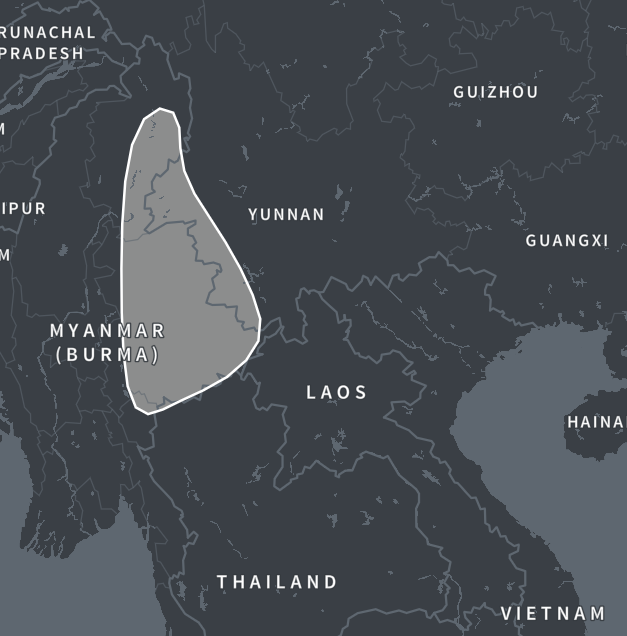What is Dai DNA Ethnicity on Ancestry?
The results of our AncestryDNA tests may sometimes be what we expect or on occasion may be a big surprise. Either way, often we need a little more information regarding some of the regions that arise in our ethnicity estimates.

One such region is the Dai DNA region. Those who still live in this region already understand all about its history and culture. There are others, however, who may never have even visited or in fact been aware that they have ancestors from that area.
In this post we will go into more detail with regards to the history, geography and culture of the Dai region. We will also discuss what it means to be from this region and how easy or difficult it might be to trace our roots in the Dai Region.
What Is the Dai DNA Region on Ancestry?
The Dai DNA region on ancestry, while found in a specific geographic region, is more focused on the spread of a particular peoples of Asia. We will look more at these peoples later in the article but first we will look at their geographic range.

As a region the Dai DNA group is mainly found within eastern Myanmar, the country formerly known as Burma. It does extend slightly to the south into northern Thailand and also to the east into the Chinese province of Yunnan. It is however a fairly small geographic region.
Who Are the Dai People?
Recognized as one of 56 ethnic groups in the People's Republic of China, the Dai are a Tai-speaking group who likely originated in Yunnan province. They at one time lived almost exclusively in Yunnan province but over time they migrated south into countries such as Laos, Thailand and Myanmar.
There are several sub-groups of the Dai or Tai peoples these are:
- Tai Lu
- Tai Nua
- Tai Dam
- Tay Pong
- Tay Don
- Tai Ya
- Tai Yo
Historically an agricultural people the modern day Dai subsist off of a raw, fresh diet heavy in rice that tends towards the sour and spicy.
History of the Dai People
The early origins of the Dai peoples date back to the Han Dynasty when in 109 BC the Yizhou prefecture was established in parts of modern day Yunnan, Sichuan and Guizhou. As a unique group however the Dai didn’t organize until much later in the region. It was actually in the 12th century that the then named Dai-Lue established the Jinghong Golden Hall Kingdom in Sipsong Panna (modern Xishuangbanna).
At one time the kingdom numbered over one million but they still recognized the Chinese as their sovereign. The King did wield local political and economic power though. This kingdom however as the local power would only last a little over a century.

During the Mongol led Yuan dynasty the Dai became a subordinate group within Yunnan. The ruling Yuan would appoint hereditary leaders in the region who would serve as the lords of an established feudal system. This would continue on in the region through the Ming dynasty.
Combined the Yuan and Ming dynasties ruled in China between 1271 AD – 1644 AD. This would maintain the Dai’s subservient status in the region for almost 4 centuries. During this time the Dai would convert to Theravada Buddhism around the 15th and 16th centuries.
When the Qing dynasty took over from the Ming the same feudal system would continue in the region. However they would take a more leading role in political power, stripping the limited influence of the Dai that once existed under the Yuan and Ming.
The Dai Who Left
While the Dai people of Yunnan lived for centuries as the labor force under several dynasties there were groups who had long since fled south. It was under the Tang and Song dynasties that nomadic groups of Dai fled to the south to avoid a time of growing political chaos.
This would occur gradually between the 7th and 13th centuries and would see the spread of Dai groups into what is modern day Myanmar, Thailand and Laos. In more recent times however many Dai groups who stayed in China were either moved or willingly migrated south. This took place over the last few centuries as Chinese political powers changed.
Does the Dai Region Have Sub-Regions?
Many of the large regions that AncestryDNA covers have multiple sub-regions. The Dai region however does not have any sub-regions. This is unfortunate as it is often beneficial if we get assigned to smaller subregions. This assignment often helps our family history research.
With so few sub-regions for the Dai region it makes it more difficult to determine from where exactly in this geographical area your first Dai ancestors may have originated.
How Did You Get Dai Region DNA?
If you already know that you had family who came from Yunnan province, Myanmar, or Thailand then you likely know why you have Dai DNA. If however this result came as a surprise you may not know how exactly you came by DNA from this region.

If you have a sizable percentage of DNA from this region then it is likely you have an ancestor who was born in or close to the Chinese province of Yunnan. Some of the country names in the Dai region have changed in recent times, for example Myanmar until 1948 was known as Burma. This is important to note as it may impact your genealogical research for your ancestors in the region.
Final Thoughts
The Dai people of southeast China were at one time a ruling group of the Yunnan province. Over time however war and shifting political influences sent huge swaths of their population south into nations that would become known as Myanmar, Laos and Thailand.
Genetically speaking, although Dai people are widespread throughout Laos and Thailand the Dai DNA region as viewed by AncestryDNA has the highest concentrations of this unique group in eastern Myanmar and western Yunnan province.
Link To or Reference This Page
We spent a lot of time downloading, cleaning, merging, and formatting the data that is shown on the site.
If you found the data or information on this page useful in your research, please use the tool below to properly cite or reference Name Census as the source. We appreciate your support!
-
<a href="https://namecensus.com/blog/what-is-dai-dna-ethnicity-on-ancestry/">What is Dai DNA Ethnicity on Ancestry?</a>
-
"What is Dai DNA Ethnicity on Ancestry?". NameCensus.com. Accessed on May 3, 2024. https://namecensus.com/blog/what-is-dai-dna-ethnicity-on-ancestry/.
-
"What is Dai DNA Ethnicity on Ancestry?". NameCensus.com, https://namecensus.com/blog/what-is-dai-dna-ethnicity-on-ancestry/. Accessed 3 May, 2024
-
What is Dai DNA Ethnicity on Ancestry?. NameCensus.com. Retrieved from https://namecensus.com/blog/what-is-dai-dna-ethnicity-on-ancestry/.
